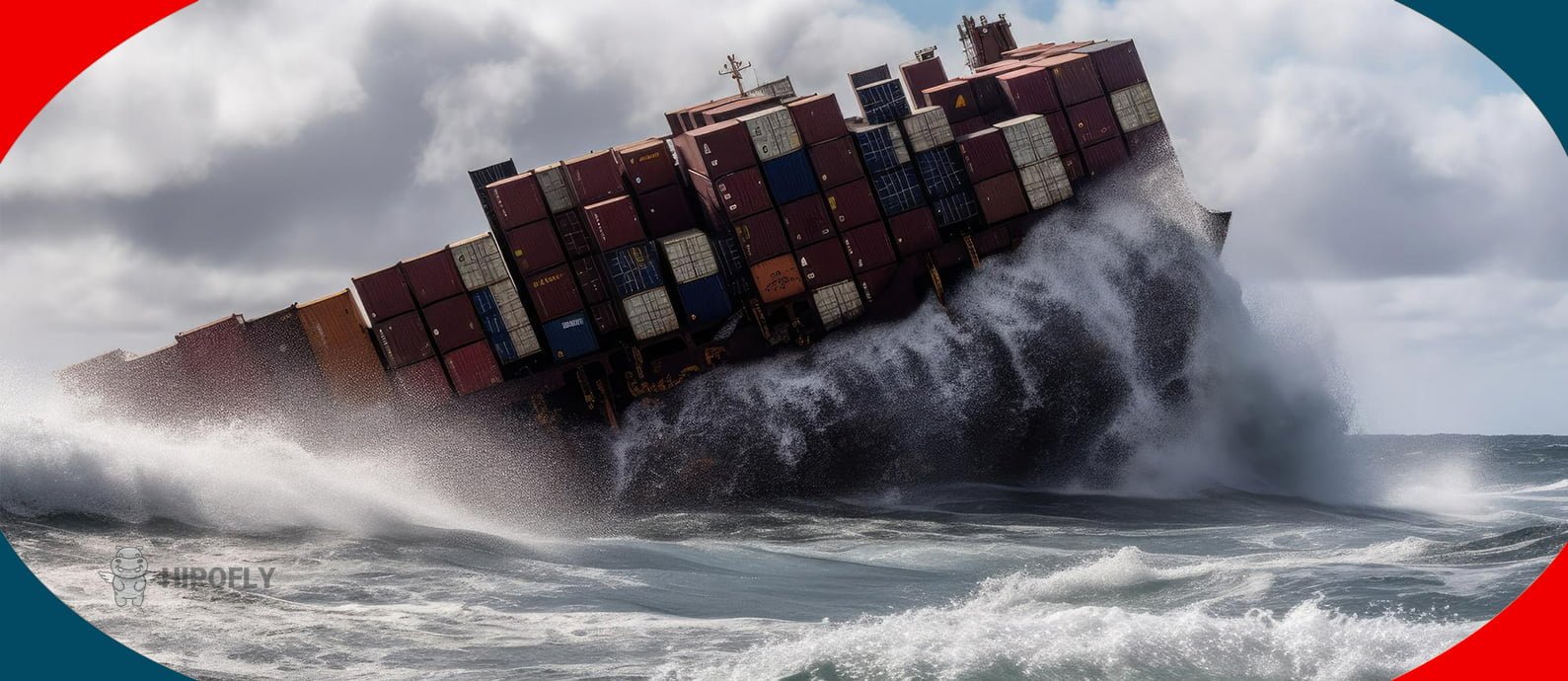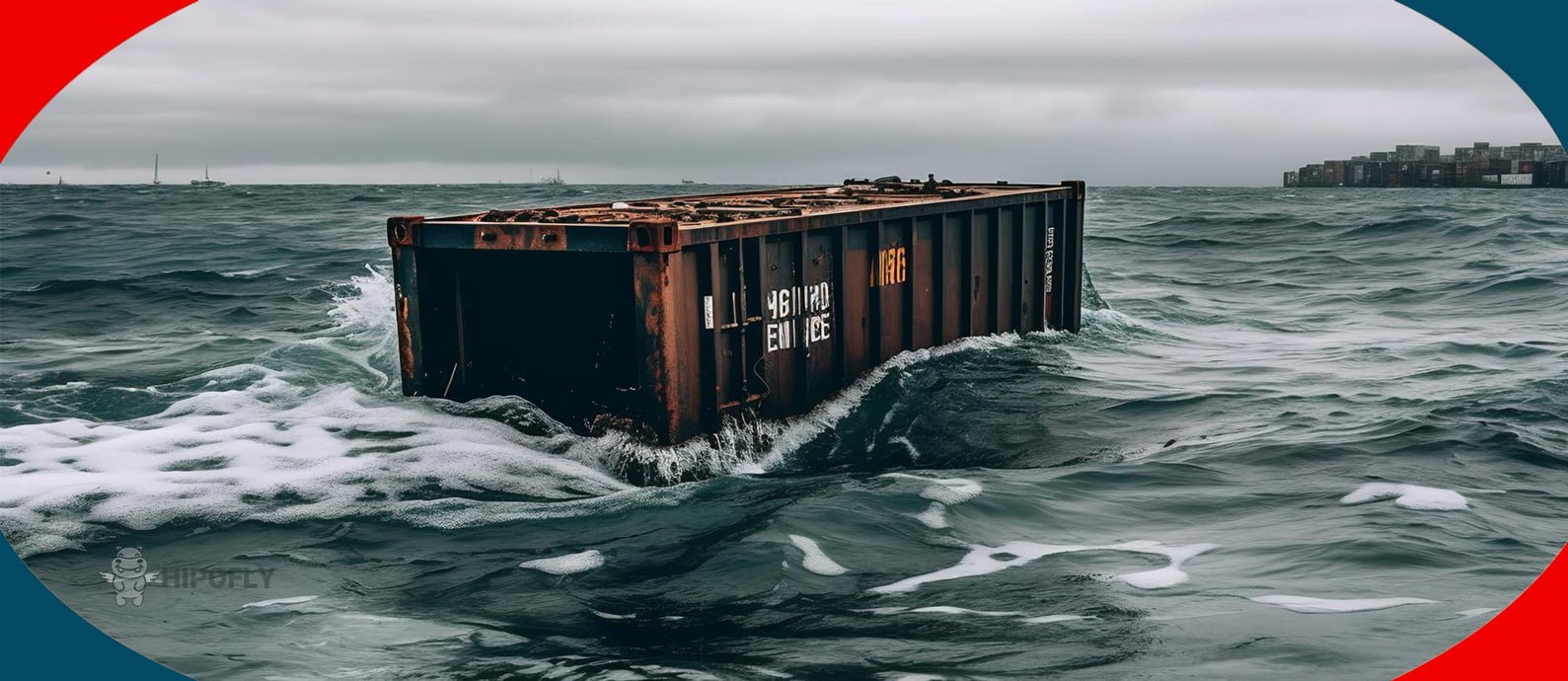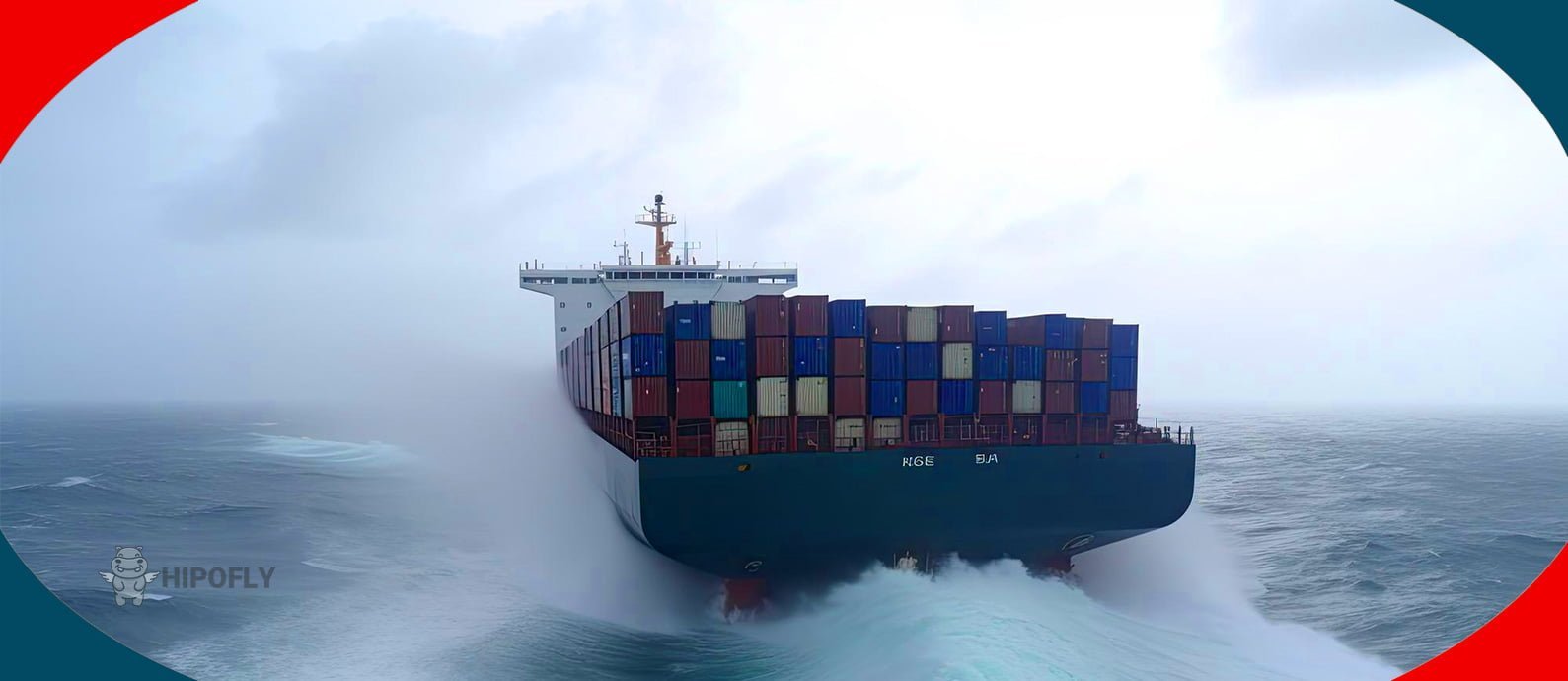Introduction
Welcome to this comprehensive guide on the “Impact of Weather on Shipping.” This article is a deep dive into how changing weather patterns and extreme weather events impact one of the world’s most important industries – shipping. From the effects on sea freight to the alterations of shipping routes and delivery times, we delve into the breadth and depth of weather’s influence on maritime operations.
Pros of Reading This Article
- Comprehensive Understanding: By reading this article, you will gain an in-depth understanding of how weather impacts the shipping industry, from changes in sea conditions and port operations to alterations in global trade patterns.
- Preparedness and Planning: Understanding these impacts can aid in better planning and preparedness for shipping companies, port authorities, and supply chain managers. It can inform decisions around shipping routes, delivery timings, and contingency planning.
- Insights into Industry Adaptations: The article also provides insights into how the shipping industry is adapting to weather challenges through innovative, weather-resilient strategies. This can provide useful ideas and inspiration for other sectors seeking to improve their own weather resilience.
- Climate Change Perspective: The discussion around the effects of climate change on shipping offers a tangible perspective on the broader implications of global warming. It highlights the urgency and importance of sustainable practices across all industries.
- Informative Tables and Examples: The use of tables and real-world examples in the article makes the information more digestible and relatable, helping to illustrate the concepts in a clear and engaging way.
Whether you’re a professional in the shipping industry, a student studying supply chain management, or simply a curious reader, this article offers valuable insights into the vital intersection of weather and shipping.
Weather Impact on Shipping: Understanding How Weather Patterns Affect Shipping Routes
Understanding how weather patterns affect shipping routes is a vital aspect of maritime logistics. Weather impacts on shipping can be grouped into five primary categories: wind speed and direction, temperature and ice conditions, storms and hurricanes, visibility factors, and ocean currents.
Wind Speed and Direction: Wind is a crucial factor in maritime navigation. High-speed winds can produce hazardous wave conditions, while its direction can either aid or obstruct the ship’s movement. For instance, a headwind can decrease a ship’s speed, resulting in increased fuel consumption and extended transit times.
Temperature and Ice Conditions: Extremely cold temperatures can lead to sea ice formation, impeding shipping routes. This is a significant issue in regions like the Arctic Circle. The MS Malmo, a Swedish icebreaker, got stuck in unexpected sea ice in the Arctic in September 2019, illustrating the importance of accurate temperature and ice condition forecasts.
Storms and Hurricanes: Severe storms and hurricanes present substantial safety risks. For example, Hurricane Irma in 2017 forced numerous ships to reroute, leading to substantial disruptions in maritime logistics and shipping schedules.
Visibility Factors: Weather conditions such as fog and heavy rain can significantly reduce visibility, making navigation difficult. Poor visibility can slow ships or even require them to anchor until conditions improve.
Ocean Currents: Ocean currents, which can be influenced by weather patterns, can aid or hinder a ship’s journey. Strategic use of currents like the Gulf Stream can reduce transit times and fuel costs.

Extreme Weather Events and Their Consequences on Sea Freight
Extreme weather events pose substantial risks to sea freight, affecting not just the logistics and economics, but also the safety of the crew and the cargo onboard.
- Tropical Revolving Storms (Cyclones, Typhoons, Hurricanes): Perhaps the most destructive weather phenomena, these storms can force substantial rerouting, leading to delays and increased fuel consumption. The violent winds and towering waves can also damage the vessels and cargo, and pose significant safety risks for the crew. For instance, the loss of the cargo ship El Faro in 2015 during Hurricane Joaquin resulted in one of the worst maritime disasters in recent history.
- Lightning: While the risk of direct lightning strikes on ships is relatively low due to their non-metallic superstructures, the associated risks cannot be ignored. Lightning can cause power surges that disrupt the electronic systems onboard, affecting navigation and communication systems. In some cases, it can also lead to fires, posing severe safety risks.
- Sea Swells: Generated by severe storms or seismic activity, sea swells can drastically affect a ship’s stability and speed. In extreme cases, large swells can lead to capsizing or structural damage. Furthermore, unsecured cargo is at risk of being damaged or lost overboard.
- Low Atmospheric Pressure: Drastic changes in atmospheric pressure can lead to rough sea conditions. The resulting high waves and winds can make navigation challenging and potentially dangerous. Low pressure systems are often associated with storms, further exacerbating the risks.
Extreme weather events underline the importance of accurate weather forecasting and strategic route planning in sea freight operations. Advanced technology and improved predictive models can help minimize these risks, but the inherent unpredictability of weather patterns continues to pose significant challenges in the maritime industry.
here’s a table that summarizes some significant weather-related events affecting sea freight:
Please note that the exact causes of some maritime accidents, like the MV Stellar Daisy sinking, may not be definitively attributed to weather but it often plays a contributing role.
Climate Change and the Future of Shipping
Climate change significantly impacts the shipping industry, not only by affecting weather patterns and sea levels but also by instigating changes in policies and regulations aimed at reducing greenhouse gas emissions.
- Sea-Level Rise and Port Infrastructure: Rising sea levels, a direct consequence of global warming, threaten port infrastructure. For example, a study from the OECD estimated that by 2100, $872 billion worth of assets will be at risk due to sea-level rise in 136 port cities around the world.
- Increasing Ocean Temperatures and Storm Intensity: Climate change is believed to increase the intensity of storms. These more extreme weather events could lead to more frequent shipping disruptions. For instance, the 2017 Atlantic hurricane season was extraordinarily active, with 17 named storms, including Hurricane Irma, which severely disrupted shipping routes.
- The Opening of New Routes: Conversely, climate change could also open new shipping routes. The melting Arctic ice is making the Northern Sea Route more accessible, potentially reducing transit times between Europe and East Asia by up to 40%. However, this brings new challenges in terms of safety, environmental protection, and geopolitical tensions.
- Emission Regulations: In response to climate change, the International Maritime Organization has set an ambitious target to reduce total annual greenhouse gas emissions from international shipping by at least 50% by 2050 compared to 2008. This is pushing the industry towards more sustainable practices, such as the development and use of cleaner fuels and more energy-efficient ship designs.
- Increased Shipping Demand: As global temperatures rise, new areas of the planet may become more habitable, and some agricultural zones may shift. These changes could increase demand for shipping as new trade routes and markets open up.
The impact of climate change on shipping is far-reaching and complex, presenting both challenges and opportunities. The shipping industry will need to adapt to these changes by implementing more sustainable practices and technologies, rethinking shipping routes, and investing in robust, climate-resilient infrastructure.
How Shipping Companies Prepare for Severe Weather Conditions
Shipping companies employ various strategies to prepare for severe weather conditions. These measures are crucial for minimizing disruptions, ensuring the safety of crew members, and protecting cargo.
- Weather Routing: Shipping companies use weather routing services to plan the most efficient and safest routes for their vessels. These services use advanced weather forecasting technology to predict weather conditions, enabling ships to avoid severe weather events and rough seas.
- Speed Adjustments: Depending on the forecasted weather, a ship might need to adjust its speed. Reducing speed can help prevent damage to the vessel and cargo during rough seas, and increasing speed can help a ship outrun a developing storm.
- Secure Cargo: Ensuring the cargo is properly secured is essential to prevent it from shifting during rough seas, which could destabilize the ship or damage the cargo.
- Vessel Maintenance: Regular checks and maintenance of the vessel can ensure that it is in optimal condition to withstand adverse weather conditions. This includes making sure that the ship’s hull and systems are in good shape, and that emergency equipment is functional.
- Crew Training: The crew must be adequately trained to handle severe weather. This includes knowing how to interpret weather forecasts, understanding how the ship handles under different conditions, and being able to carry out emergency procedures.
- Emergency Planning: Shipping companies must have an emergency plan in place, including procedures for communication during a storm, evacuation plans, and protocols for dealing with damage to the ship or cargo.
- Insurance: Lastly, having appropriate insurance can help protect against the financial risks associated with severe weather. This includes coverage for damage to the vessel and cargo, as well as potential liabilities.
The unpredictable nature of weather makes it a significant challenge for the shipping industry. However, with careful planning, preparation, and the use of modern technology, shipping companies can mitigate the risks and ensure that their vessels, crew, and cargo remain safe.

The Impact of Weather on Shipping Speeds and Delivery Times
Weather can significantly impact shipping speeds and delivery times, often resulting in delays that can ripple through the global supply chain.
- Wind Speed and Direction: High winds, especially those blowing in the opposite direction of a ship’s course, can slow down a vessel significantly. On the other hand, tailwinds, or winds blowing in the same direction as the ship, can increase speeds and decrease transit times. However, winds that are too strong can lead to dangerous sea conditions and slow a ship for safety reasons.
- Sea Conditions: Stormy weather can cause large waves and swells that can slow ships down and make navigation challenging. Ships often need to adjust their speed to ensure the safety of the crew and cargo. In extreme cases, a ship might need to reroute completely to avoid a storm, adding significant time to the voyage.
- Ice and Cold Temperatures: In cold climates, ice can slow ships down or completely block shipping routes, often forcing vessels to take longer, alternate routes. For example, certain parts of the Baltic Sea or the Northern Sea Route can become impassable during winter, leading to delayed deliveries.
- Fog and Rain: Poor visibility due to fog or heavy rain can significantly reduce shipping speeds. In extreme cases, ships may need to drop anchor and wait for conditions to improve.
- Ocean Currents: Weather patterns influence ocean currents, which can either aid or hinder a ship’s journey. A ship traveling against a strong current will be slower and consume more fuel, thereby extending the delivery times.
In light of these factors, shipping companies use sophisticated weather forecasting technologies and services to plan optimal routes and schedules. Despite these tools, the inherent unpredictability of weather means that delays can and do occur, highlighting the importance of building flexibility into shipping schedules and supply chains.

Weather-Induced Port Closures and Their Effects on Global Trade
Weather-induced port closures have a substantial impact on global trade, as they can result in significant delays and increased costs.
Disruption of Trade Flow: When a port is forced to close due to severe weather, such as a hurricane, typhoon, or extreme fog, it halts the import and export of goods. This has a domino effect on supply chains, causing delays that can take weeks or even months to resolve.
Increased Costs: Delayed deliveries due to port closures often result in increased costs. These can arise from storage fees for goods that are stuck at ports, as well as from additional transportation costs for rerouting shipments. In addition, there can be financial penalties for late delivery of goods.
Supply Chain Inefficiencies: Unexpected port closures can lead to a buildup of ships waiting to dock, which is known as port congestion. This not only delays the unloading and distribution of the current goods but also the loading and dispatch of goods for the next leg of their journey, leading to further inefficiencies.
Economic Impact: On a larger scale, port closures can have significant economic impacts. For example, the Port of Houston, a major hub for U.S. oil and gas trade, was forced to close for several days due to Hurricane Harvey in 2017. This resulted in disruptions to the U.S. energy industry and spikes in gasoline prices.
Impact on Commodities: Weather-related port closures can also impact commodity prices. For instance, if ports that are key outlets for the export of commodities such as oil, grain, or iron ore close due to weather events, it can lead to temporary price increases due to decreased supply.
Weather-induced port closures underline the importance of robust and flexible supply chains. By having alternate routes and suppliers, diversifying distribution methods, and investing in accurate weather forecasting technology, businesses can mitigate some of the risks associated with these events.
These events highlight the significant implications weather-induced port closures can have on global trade and underline the need for effective planning, preparedness, and risk mitigation strategies within the shipping industry.
Adapting to Weather Challenges: Innovations in Weather-Resilient Shipping
The shipping industry is proactively seeking and implementing innovative solutions to enhance resilience in the face of weather challenges. Below are some significant developments:
Weather Routing Systems: Advanced weather routing systems use predictive models to foresee weather conditions and provide optimized routes that can improve safety and efficiency. These systems consider factors such as wind speed and direction, sea conditions, and currents.
Autonomous Ships: Autonomous ships can use artificial intelligence (AI) to process weather data more efficiently and make navigation decisions. This can minimize human error and potentially lead to safer and more efficient shipping in adverse weather conditions.
Real-Time Monitoring and IoT: Internet of Things (IoT) devices can monitor weather conditions in real-time and feed information to both ship and shore-based teams. This can help in making quicker decisions and in effectively managing shipping operations during severe weather.
Advanced Ship Design: Ships are being designed with features that can withstand adverse weather conditions better. For instance, reinforced hulls can endure high waves and strong winds, and stabilizers can reduce the impact of rolling and pitching due to rough seas.
Climate-Resilient Ports: Ports are being designed to be more resilient to climate-related issues. This includes improved infrastructure to deal with rising sea levels, better drainage systems to handle increased rainfall, and enhanced structures to withstand stronger winds.
Sustainable Shipping Practices: Shipping companies are implementing more sustainable practices to mitigate climate change, which is intensifying weather extremes. This includes using cleaner fuels and developing energy-efficient ship designs.
In the face of growing weather-related challenges, these innovations and measures highlight the shipping industry’s commitment to enhancing its resilience and ensuring the continuity of global trade. It’s crucial that the sector continues to evolve and adapt in response to our changing climate.
The Northern Sea Route offers exciting possibilities for global shipping and could reshape trade patterns in the future. However, it also comes with significant uncertainties and risks that will need to be carefully managed.
Conclusion
In conclusion, this comprehensive exploration of the “Impact of Weather on Shipping” underscores the profound influence of meteorological conditions on shipping operations worldwide. From disruptions caused by extreme weather events to the adjustments required in shipping routes and speeds due to varying weather patterns, it’s clear that weather plays an instrumental role in shaping the industry’s practices. Moreover, as climate change continues to reshape our world, it’s evident that its impact will become even more significant.
In response to these challenges, the shipping industry has shown remarkable resilience and adaptability, developing innovative solutions to weather disruptions. These adaptations, including the advent of weather routing systems, autonomous ships, real-time monitoring through IoT, advanced ship design, and climate-resilient ports, represent essential strides toward a more reliable and sustainable shipping industry.
The insights provided in this article are brought to you by Hipofly Shipping Company. A leader in the shipping industry, Hipofly Shipping offers a broad range of services that cater to diverse shipping needs. Whether you’re looking for air freight for speedy deliveries, sea freight for large shipments, or door-to-door services for a convenient, hassle-free experience, Hipofly has got you covered.
Furthermore, Hipofly’s express shipping service from China to destinations worldwide ensures that your goods are delivered as quickly as possible, bridging the distance between countries and continents. With a deep understanding of the challenges posed by weather to shipping and a commitment to innovation, Hipofly Shipping is continually evolving its services to offer the most reliable, efficient, and resilient shipping solutions in the industry.
Weather can significantly influence shipping routes. Ships might need to alter their paths to avoid stormy areas, high winds, or ice conditions, which can impact delivery times and fuel consumption.
Severe conditions like hurricanes, typhoons, dense fog, extreme cold leading to ice formation, and high waves can cause significant disruptions to shipping, from slowing ships down to causing port closures.
High winds can slow down a ship, particularly if they're blowing in the opposite direction of a ship's course. Extremely high winds can also create dangerous sea conditions and may force a ship to reroute.
Cold temperatures can lead to ice formation, which can slow down ships or even block certain shipping routes completely. This often forces vessels to take longer, alternate routes.
Shipping companies use advanced weather forecasting systems to predict weather patterns and plan their routes accordingly. They also design their ships to withstand harsh weather conditions and train their crew to handle such situations.
Yes, poor visibility due to fog or heavy rain can significantly reduce shipping speeds. In extreme cases, ships may need to wait for conditions to improve.
Examples include the closure of the Port of Houston due to Hurricane Harvey in 2017 and the closure of Chinese ports due to Typhoon In-Fa in 2021. Both events caused significant disruptions to global trade.
Port closures can disrupt the flow of goods, leading to delays in deliveries, increased costs, supply chain inefficiencies, and significant economic impacts.
Weather-related port closures can impact commodity prices. If key ports for exporting commodities like oil, grain, or iron ore close, it can lead to temporary price increases due to decreased supply.
The shipping industry is developing and implementing innovative solutions, including advanced weather routing systems, autonomous ships, real-time monitoring, advanced ship designs, and climate-resilient ports.


